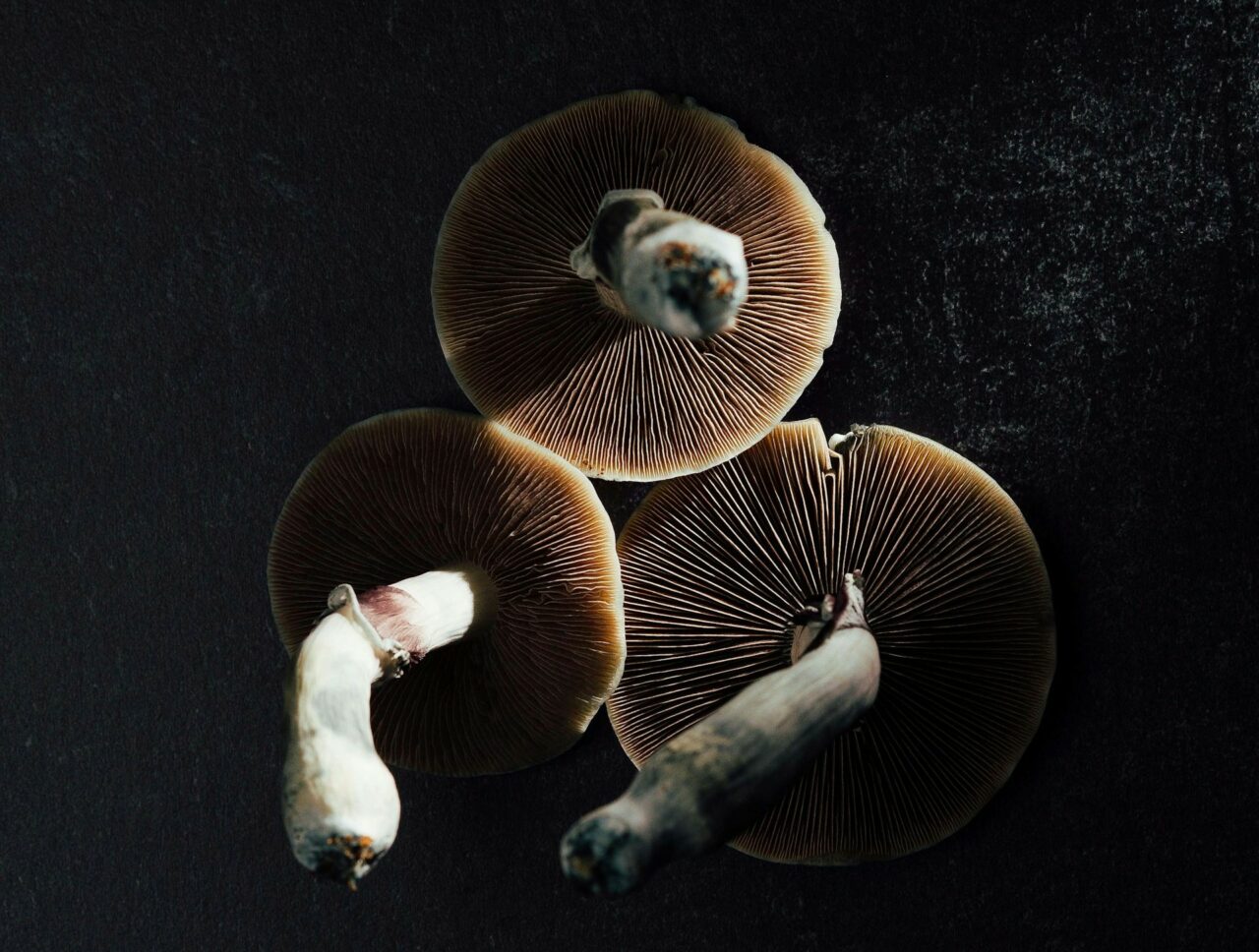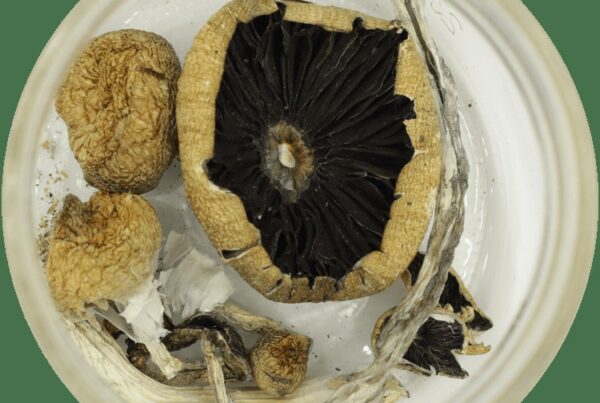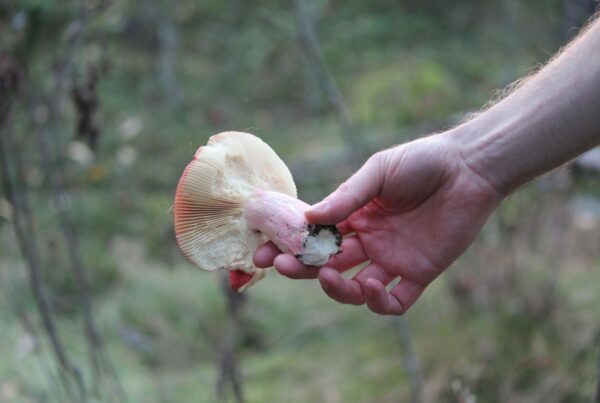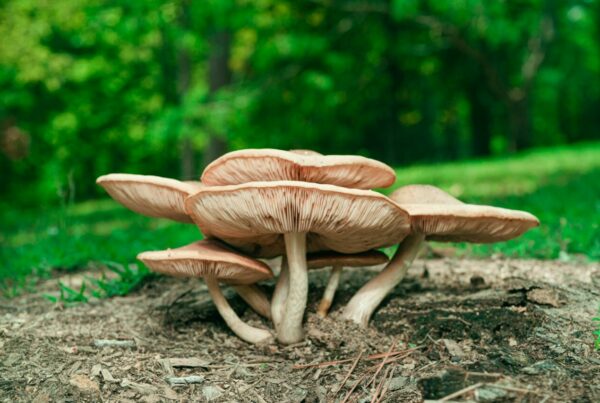As the demand for natural magic mushrooms in Canada increases, we’re observing a parallel rise in the popularity of lab-created psilocybin products. These laboratory-made products are favored by many researchers due to the guarantee of dosage consistency. However, it’s worth noting that naturally occurring mushrooms might be more powerful than their lab-made equivalents. Specialists have pointed out substantial variations between the two, including differences in potency.
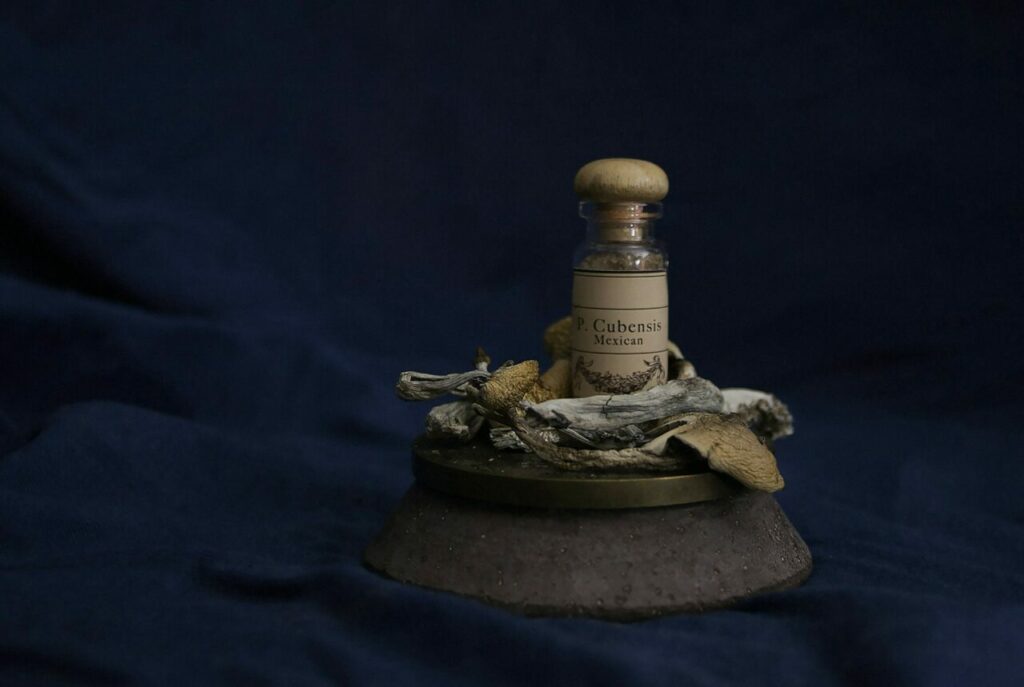
Key Takeaways:
- Over 180 species of natural mushrooms provide varying levels of potency. These levels can be influenced by factors such as the mushroom species, consumption method, cultivation process, and individual tolerance.
- Synthetic psilocybin, a lab-synthesized form of the organic compound, is produced under controlled conditions to maintain consistency and purity. This is especially important for clinical research, particularly in mental health therapies.
- The combined effects of various compounds present in psychedelic mushrooms, including psilocin and baeocystin, can lead to a more profound and intense experience than that provided by a single compound alone.
Emerging Market: Diverse Forms of Psychedelics
The use of psilocybin mushrooms in Canada is escalating quickly, particularly for the treatment of mental health disorders such as OCD, depression, PTSD, and anxiety. In light of this heightened interest, provincial governments are starting to contemplate decriminalizing its recreational use.
In 2020, Canada allowed restricted medical use of these mushrooms under certain circumstances. Just last year, the federal government granted permission for specific terminally ill patients to use these substances to cope with their symptoms.
These progressive steps have spurred the development of synthetic psychedelics.
The Ongoing Dialogue
The continuing discussion regarding organic versus lab-manufactured psychedelics focuses on safety, accessibility, and cost considerations.
Many believe that natural psychedelics provide a more complete and traditional experience. Conversely, supporters of lab-created versions emphasize their capacity for standardized dosage and quality control for medical applications.
While lab-manufactured psychoactive substances could increase accessibility, there are ongoing concerns about the potential for drug monopolization. Critics warn this could result in less increased expenses for users.
/wp:paragraph –>A Comprehensive Guide to Understanding Psilocybin
Psilocybe cubensis, a kind of magic mushroom, is one of the myriad naturally occurring psychedelic substances that exist today. Magic mushrooms, renowned for their psychoactive properties, are found in a range of strains such as Golden Teachers, Amazonian Cubensis, Blue Meanies, among others, with Psilocybe cubensis as the most well-known family.
Deciphering the Psychedelic Process
Psilocin, a compound obtained from this mushroom, transforms into a distinct chemical once metabolized by the liver. This transformed compound interacts with the brain’s serotonin receptors, specifically with the 5-HT2A receptor.
This receptor is crucial in regulating mood, cognitive functions, and perception. Its interaction with the transformed compound alters the usual functioning of serotonin pathways, leading to changes in visual and auditory perception, thought patterns, and emotional states. Such interactions result in an elevated mood, enhanced creativity, introspection, and the so-called “psychedelic” experiences.
Two Main Categories
| Natural | Found in over 180 species of fungi, the potency of these substances varies depending on the species of the mushroom. Psilocybe cubensis is a common variant. The effects may differ based on methods of consumption, cultivation techniques, and individual tolerance. |
| Synthetic | Manufactured in laboratories and chemically identical to natural compounds. They are produced under controlled conditions to ensure consistency and purity. These compounds are increasingly being explored for clinical uses, particularly in the realm of mental health treatments. |
Comparing Nature’s Gift and Science’s Creation: Key Differences
Natural variants of these substances can be found in certain species of magic mushrooms. Indigenous societies in North and South America have utilized these mushrooms in their rituals and ceremonies, viewing them as sacred or divine.
- Sourced from plants and mushrooms
- Employed in ancient rituals and healing practices
- The potency of each strain is determined by its unique genetic composition
On the other hand, the
synthetic form of this drug is
A synthetic drug is a type of substance that closely mirrors the chemical structure of a specific natural compound. Such drugs are meticulously engineered by experts in controlled environments to ensure precision. Despite their similarity to natural substances, they can alter the overall psychedelic experience.
- Produced by proficient pharmaceutical experts
- Innovative creations intended for medical uses
- Precise strength due to standardized manufacturing procedures
Organic substances, due to their bioactive compounds, offer additional advantages. Various types of mushrooms may contain different levels of psilocybin and other compounds, producing a range of effects.
Researcher Insights
Research conducted at Hebrew University revealed that psychedelic mushrooms have a more powerful and enduring impact on synaptic plasticity compared to their synthetic counterparts. The research team investigated how the drug affected the brain activity of mice by monitoring behavioral changes and specific brain chemicals.
The research concluded that the extract reduced head twitches and promoted the formation of new brain connections, suggesting that mushroom extract could provide more benefits than a single compound.
Researchers also introduced the “entourage effect” concept, which they described as the phenomenon where the combined impact of multiple compounds in psychedelic mushrooms could exceed the effects of individual compounds. It suggests that in the case of mushrooms, psilocin, baeocystin, and other tryptamines may work collectively to create a deeper experience.
These supplementary chemicals are absent in laboratory-produced substances, potentially leading to subtle variations in effects, despite having identical psychedelic content.
Expert Opinions on Nature’s Superiority
Research consistently demonstrates that psilocybin, in all its forms, shows promising results for the treatment of a range of psychiatric disorders. A 2024 study examined the impact of controlled substances on patients with treatment-resistant depression and found that symptoms decreased following the use of magic mushrooms.
When combined with other treatments, organic psychedelics could potentially facilitate deeper emotional processing and insights during therapy sessions, thereby enhancing long-term results.
Researchers from the same university noted that hallucinogenic mushrooms promote synaptic plasticity. These mushrooms possess a unique metabolic profile that affects oxidative stress and energy production pathways, unlike synthetic psychedelics.
Market Consequences
The growing body of research on this subject could alter Canadians’ views on and purchasing patterns for psychedelics. Early steps taken by Health Canada, including the Special Access Program, seem to be making progress towards legalization and reshaping the therapeutic landscape. Psilocybin-assisted therapy might become a primary treatment strategy in the near future.
Natural options are likely to become increasingly vital in clinical trials and therapeutic settings. As the country progresses towards fully unlocking the potential of organic psychedelics, major improvements in mental health treatment appear to be on the horizon.
Guidelines for Safely Acquiring Shrooms in Canada
- Through Section 56 Exemption: Health Canada recognizes that patients with severe medical conditions may use psilocybin as an alternative treatment. This exemption is part of the Controlled Drugs and Substances Act.
- Clinical Trials: Initial clinical trials have been authorized to investigate the drug’s potential for treating mental health conditions. Participants must meet certain requirements and pass a medical screening.
- Online Market: Psilocybin capsules or edibles can be purchased from online retailers in Canada, but it’s crucial to buy from reliable sources.
Explore the Strength of Natural Substances
Nature abounds with marvels, and shrooms are one of them. Rather than turning to synthetic psychedelics, consider the naturally potent magic mushrooms from Canada. They are strong and therapeutic. Discover the best, nature-derived shroom strains at Shrooms For Sale Canada.
The shrooms we have available not only meet but exceed the standard by maintaining their purest and most genuine composition in dehydrated form. Make your purchase today, and have your chosen products conveniently and discreetly shipped to your home.
Frequently Asked Questions
What are baeocystin and norbaeocystin?
Both are tryptamine or indole alkaloids. They are chemically akin to psilocybin. These tryptamine derivatives act as secondary alkaloids in shrooms, enhancing the overall psychedelic effect, albeit to a lesser extent. Baeocystin and Norbaeocystin have similar chemical structures but
Psychoactive properties may vary across different substances.
Are organic dried mushrooms present in capsules and edibles?
Your experience could potentially be influenced by the source of the product. Online Dispensaries offer products that are rich in organic constituents, facilitating a comprehensive entourage effect. In contrast, synthetic compounds in the form of capsules are frequently utilized in clinical trials and medical clinics.
Can natural psychedelics lead to deeper experiences?
It’s crucial to understand that the expectation of a profound experience from a natural psychedelic could actually lead to such a result. After all, our anticipation forms part of the ‘set’ and can guide the journey. Natural psychedelics, often linked with ceremonial traditions, can offer uniquely enriching experiences within this ritualistic framework. These experiences differ significantly from those encountered in clinical settings with synthetic compounds.

